Today we're going to introduce you to a scientist who had a real appetite for experiments. A genius who helped us to understand what's in our food and also what food to eat to stay fit and healthy. In fact, her recommendations helped this country to become the healthiest it's ever been. Ladies and gentlemen, we give you… Elsie Widdowson.
Hello, chaps.
Widdowson was born in 1906 in the days when food was something people just ate. They didn't know too much about what's in it and how it affects our bodies. Widdowson's genius idea was to write a book that told us what's in our food. It listed things like how much energy all our foods were giving us. She wrote it with her partner in science, Robert McCance, and it was called The Chemical Composition Of Foods. Catchy, eh?
And she didn't just look at energy. The book also listed important nutrients, like the carbohydrates, protein, fats and minerals that we find in all our foods. Genius!
So, we're going to do an Elsie. We're going to take some food and recreate the experiments that she did. A little pepperoni pizza there and some other stuff.
Urgh!
Not urgh! Carrot, broccoli and beans? Good for you.
Now, all of these foods would've been very familiar to Elsie. I wanted to try something that she wouldn't have tested. Lift that lid!
Oh, my goodness, look at them!
It's got maggots in it!
These are mealworms.
And, believe it or not, you can make a meal out of them. Here's some Stefan prepared earlier.
Now, these are ready to eat.
Don't look, lads. There's some of your mates over there. They're looking a bit crispy. Time to give them a try. But, as I'm vegetarian, I'll leave that to the others. Ready, lads? OK. Yes?
Weirdly, they're quite nice.
They taste very much like crisps.
They're actually pretty tasty.
Really?
Seriously.
We already know how many calories our everyday foods contain. But how many calories are in mealworms? To help us do our own experiment, we've turned to genius assistant Rosie. She's used a nifty bit of kit called a bomb calorimeter. What's the final calorie content of those lovely little worms?
Erm, it's not as low as you think. It's 421 calories.
What?
Per 100 grams.
Wow! That's almost as many calories as in a big bag of crisps. That's quite a lot!
So there you go, right? No more mealworms for you.
No more mealworms for me.
Just stick to pizza.
THEY LAUGH
So, with the help of Elsie, we can find out exactly what's in our food. But what does our body do with these calories?
How do you think you get that energy from the food? What do you do to it?
Eat it.
Yeah, you eat it.
Digest.
Yeah. But then it makes energy parcels.
We're using these bottles of lemonade and some mints to create our own energy parcels. When you digest the food, it's broken down into those really small bits. Then they react with oxygen to make little energy parcels that can then be moved around your body and used whenever your body needs to.
Energy parcels ready. Time to release that energy!
Yes! Yes!
I'm dropping, I'm dropping!
Ohh!
OK, right, leave it a bit. Go on, go on, go on!
Yay!
There you go!
ALL CHEER
Come on, show them what you're worth
And that's how you get the energy from food.
She did it!
Widdowson's genius book told us exactly how many calories and other nutrients were in all the different foods we eat. This information became essential during the Second World War. Food was scarce and the government rationed supplies. Widdowson helped work out the basic foods each person needed to stay healthy.
Here's the plan! Our genius idea - to fuel up on World War II inspired food rations. Our challenge - to complete a series of physical tests, including battling an assault course and scaling a 12-metre wall.
Hopefully our rations will give us enough energy to run across the countryside all the way to the finish line.
There wasn't much meat around during the Second World War. Widdowson's advice was to eat loads of fresh veg to stay healthy and full of energy. So we've been rationed to a meat-free pasty.
Is that it? A vegetable pasty?
Yep. About 500 calories worth.
Come on, eat it up!
Fuelled up and ready to go, it's finally time to put those rations to the test.
Go!
Come on, pasty, give us some energy!
Go, go. Keep going. Come on, Dom. Up you get. Burn those rations.
Hang in there, Dick, we're almost there!
I can see the finish line!
Think of Widdowson! We're doing it for her.
It's the finish! Let's go!
We've done it!
But I've no idea why.
One thing's for certain, though. Elsie Widdowson, you are an absolute genius.
Oh, thank you, boys. You're very kind.
Video summary
Dick, Dom and Fran Scott explore the life and work of Elsie Widdowson.
She was born in 1906, a time in which people did not know much about the content of the food they ate.
She published a book called ‘The Composition of Foods’ which contained details of the energy, protein and other nutritional values of many foods.
Dick and Dom recreate one of her experiments to determine that there are 421 calories in 100 grams of mealworms.
They then combine lemonade and mints to release energy in a demonstration of how we get energy from food.
The key scientific points are made in a fun and student-friendly way.
This short film is from the CBBC series, Absolute Genius with Dick & Dom.
In this entertaining series Dick and Dom learn about the geniuses whose ideas, creations and discoveries have shaped our world.
Teacher Notes
After watching this short film, pupils could discuss the impact that Widdowson’s scientific method had on everyday life and the idea of healthy living.
Pupils could be shown the recommended levels of nutrition during World War Two, and also for today. How have they changed?
Pupils could be tasked with creating a shopping list for a day’s worth of food which meets Widdowson’s recommendation.
Pupils could look at various food products online, researching the nutritional information for each item.
When they have finished, they could compare shopping lists.
Alternatively, pupils could undertake this task as a homework activity, and be encouraged to take pictures of each food item they purchase from the supermarket.
To provide greater challenge, students could prepare shopping lists for individuals with specific nutritional needs such as vegetarians, or an individual with coeliac disease who must eat gluten-free food.
They could extend the shopping list to a full weekly food plan.
This short film is suitable for teaching science at Key Stage 2 in England, Wales and Northern Ireland, and Second Level in Scotland.
Discovering the work of Archimedes. video
Dick and Dom describe the major scientific achievements of 'Absolute Genius', Archimedes, who is best known for his work on floating and sinking.
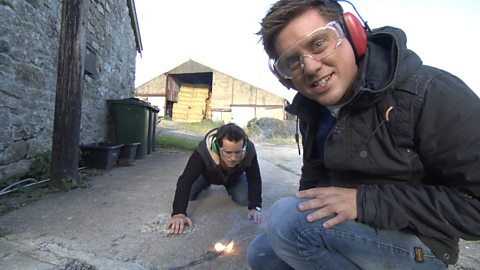
Discovering the work of Delia Derbyshire. video
Dick and Dom describe the major scientific achievements of 'Absolute Genius', Delia Derbyshire, including creating electronic music.
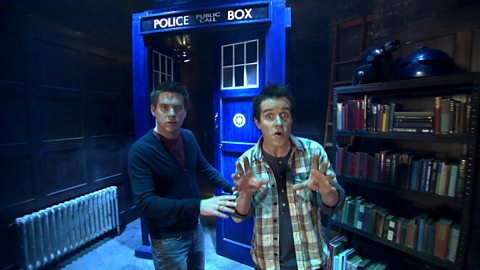
Discovering the work of Isambard Kingdom Brunel. video
Dick and Dom describe the achievements of 'Absolute Genuis', Isambard Kingdom Brunel, who designed famous bridges.
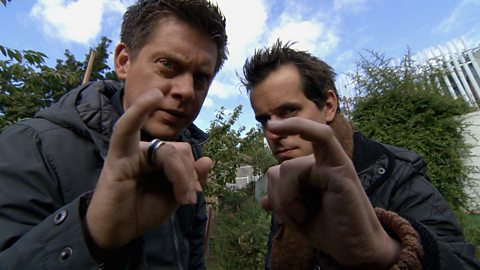
Discovering the work of James Watt. video
Dick and Dom describe the major scientific achievements of 'Absolute Genius', James Watt, who made steam engines much more efficient.
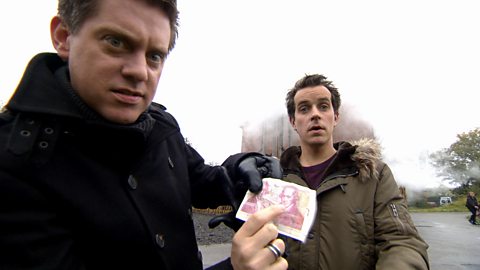
Discovering the work of Joseph Bazalgette. video
Dick and Dom describe the major scientific achievements of Joseph Bazalgette, who designed one of the first ever sewers.
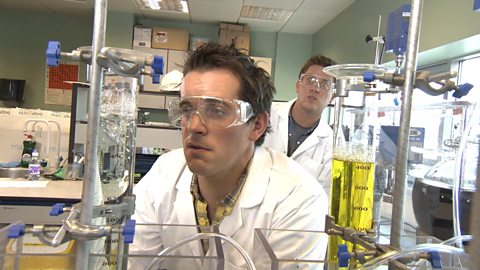
Discovering the work of Leonardo da Vinci. video
Dick and Dom describe the scientific achievements of 'Absolute Genius', Leonardo da Vinci, who is famous for his painting of the Mona Lisa.
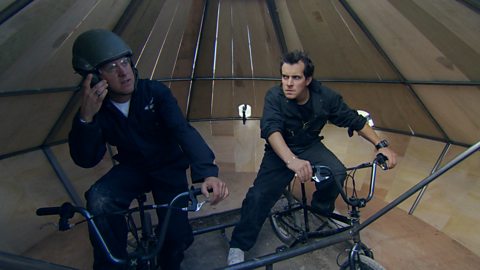
Discovering the work of Michael Faraday. video
Dick and Dom describe the major scientific achievements of Michael Faraday, who is most remembered for his work on electrical energy.
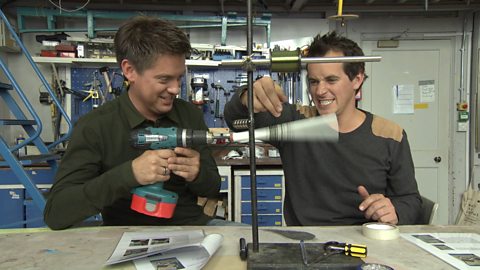
Discovering the work of Sir Isaac Newton. video
Dick and Dom describe the scientific achievements of Isaac Newton, who is best known for discovering gravity.
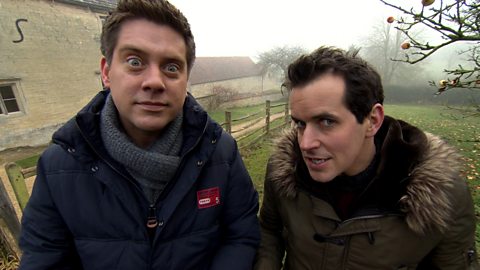
Discovering the work of Wernher von Braun. video
Dick and Dom look at the scientific achievements of Wernher von Braun, who was described by NASA as “the greatest rocket scientist in history”.
